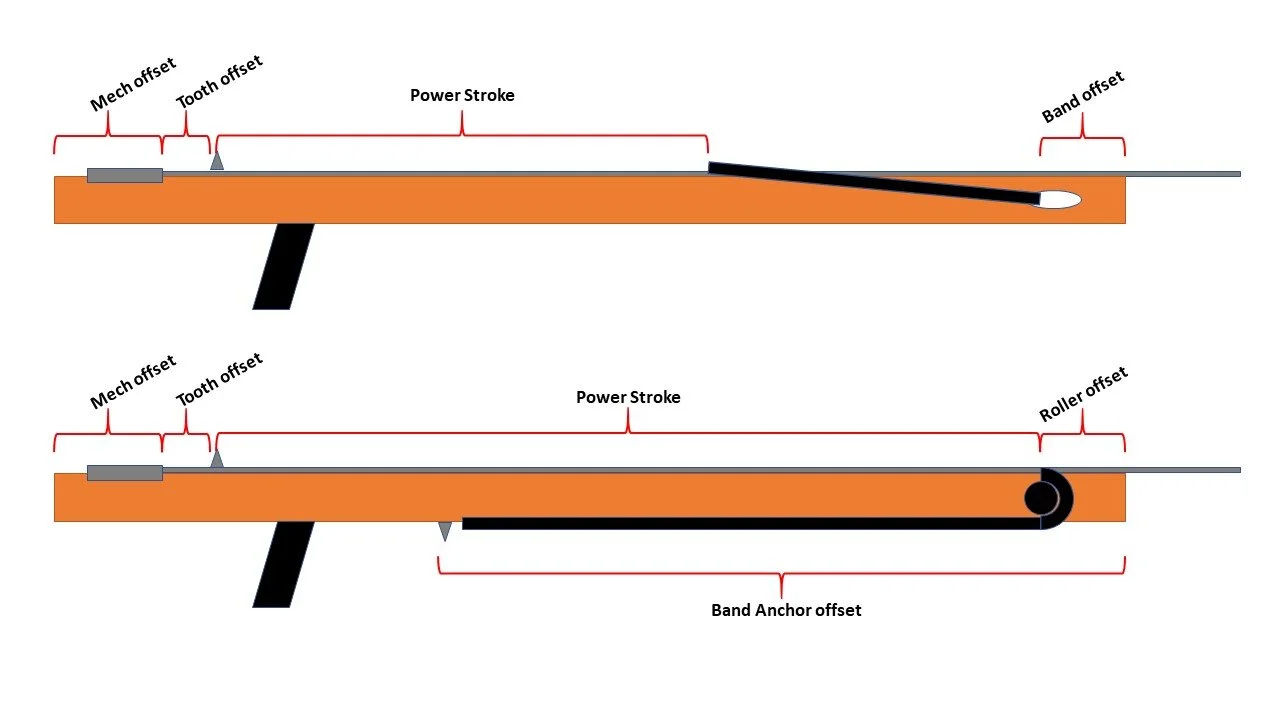Speargun Energy Estimation and Comparison
Spearo’s are always asking questions like how much more or less power would I get if I;
add/remove bands
go a few inches short/longer
change from 14mm to 16mm rubber
use small ID rubber
place the trigger more forward
reduce band stretch from 350% to 300%
use rollers instead of traditional
I use a simple “Energy” calculator tool to estimate the amount of work that can be done, or energy transferred, by the band force over a known distance. The details of that can be seen in the above graphic.
The estimate is not perfect but it works well as a comparison tool to see the effects of lengths and bands and gun design layout. It assumes band force is linear over the power stroke which in reality is slightly non-linear. Losses due to friction or band drag in the water are not evaluated but are present in every gun.
I’m very interested in the concept of maximum band speed. This means a band can only move at a maximum speed in the presence of water resistance. The rubber itself has a speed limit as well. This is interesting because at some point adding bands has little or no value since they reach top speed before shaft leaves gun. I hope to understand this better with the help of high-speed video experiments. It’s possible the point of diminishing returns is very high and we get more power up to a high band count…stay tuned for developments. Who wants to pull a 7th band if it’s not helping!
I will enter all band data and speargun dimensions into the calculator to see the total energy that could be transferred to the spear shaft neglecting all energy losses. The number that results is in units of Joules, the common unit of energy in physics.
To get even more accuracy we can run the calculator for each band separately while considering different anchor points and/or stretch, then sum them up for a total energy. Or for quick estimate you can just enter a band quantity 3, 4…and assume all are equal.




